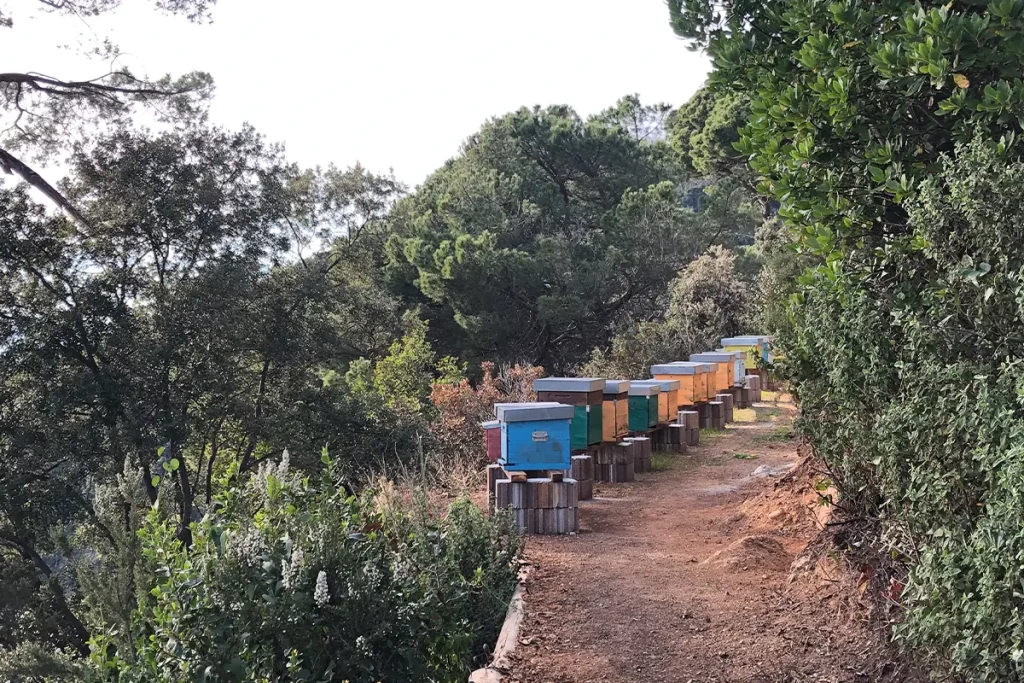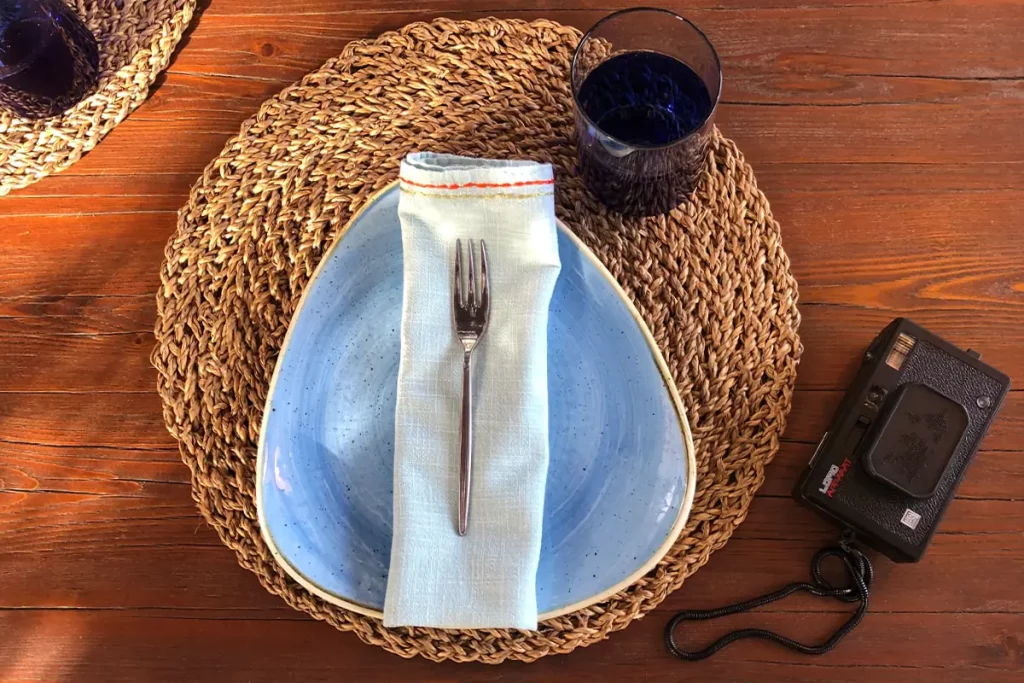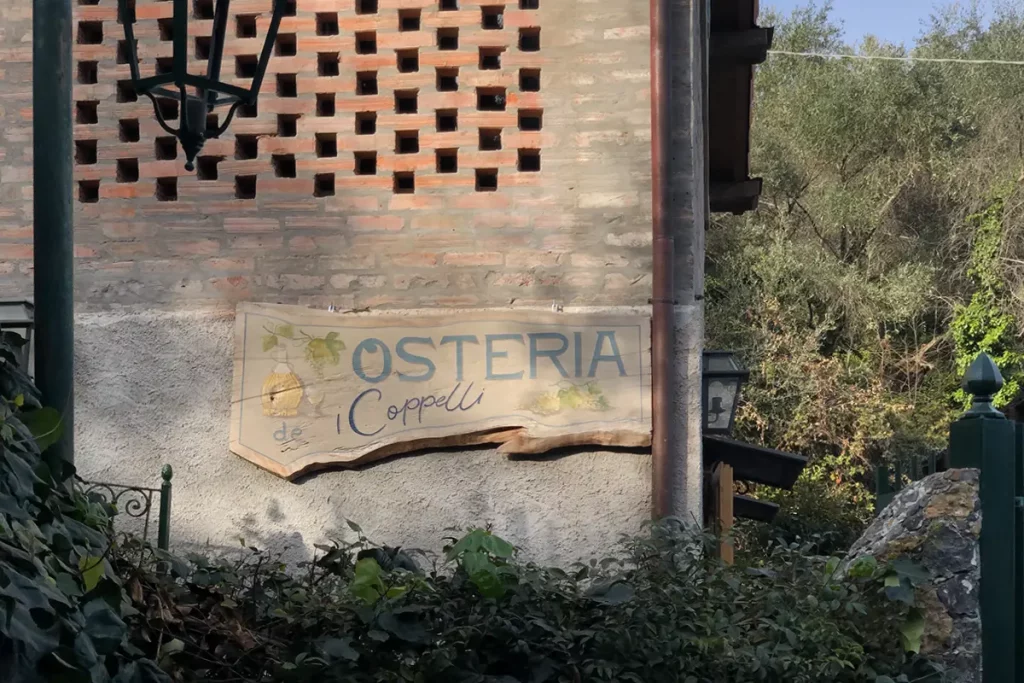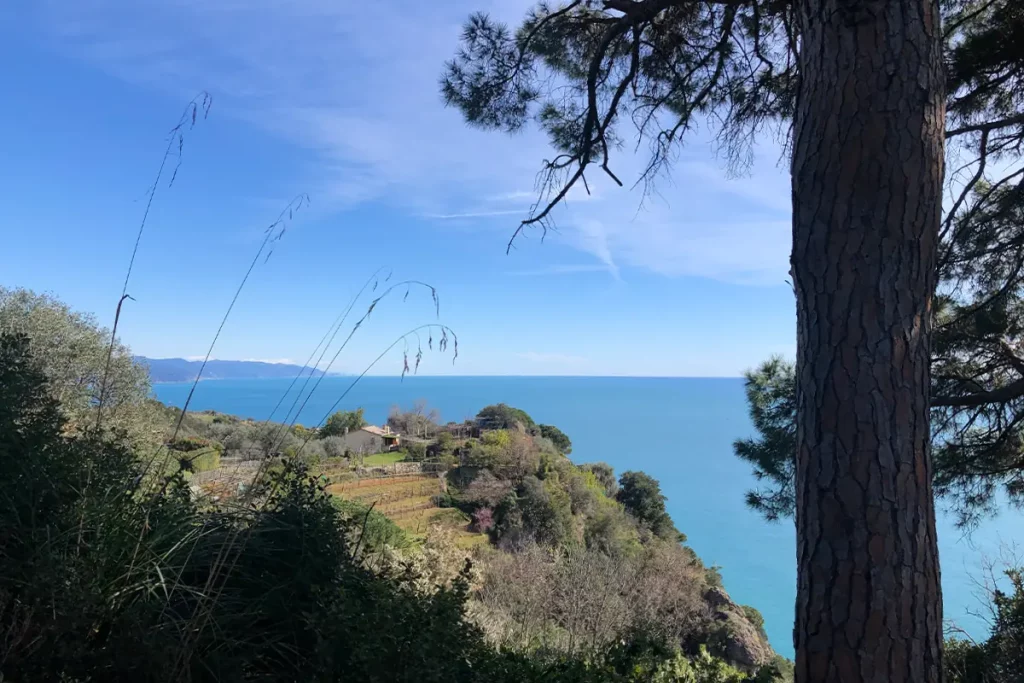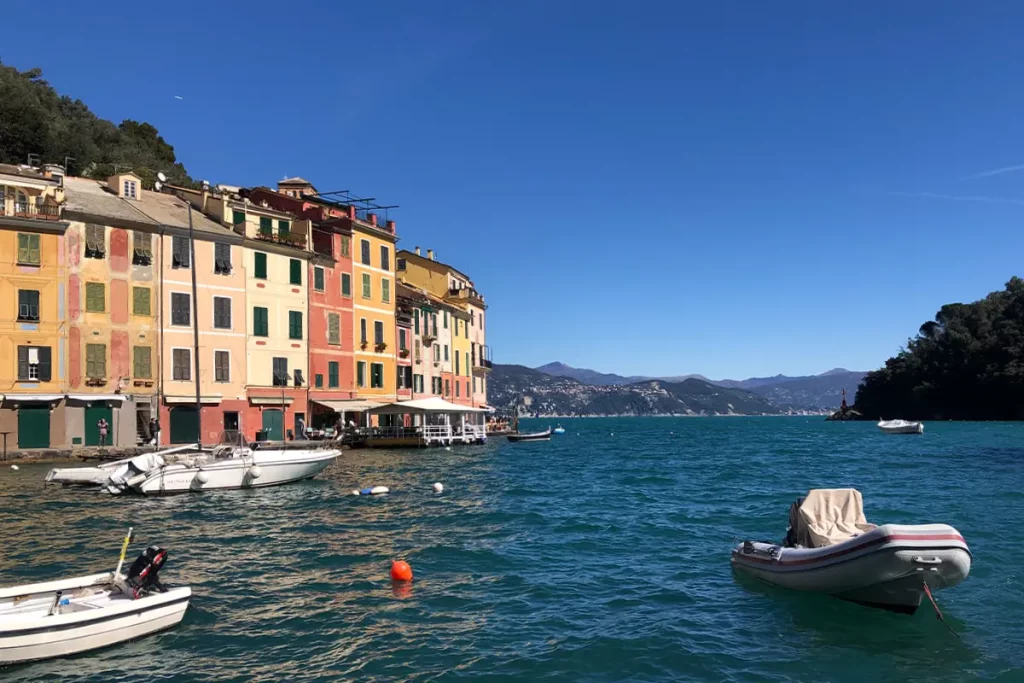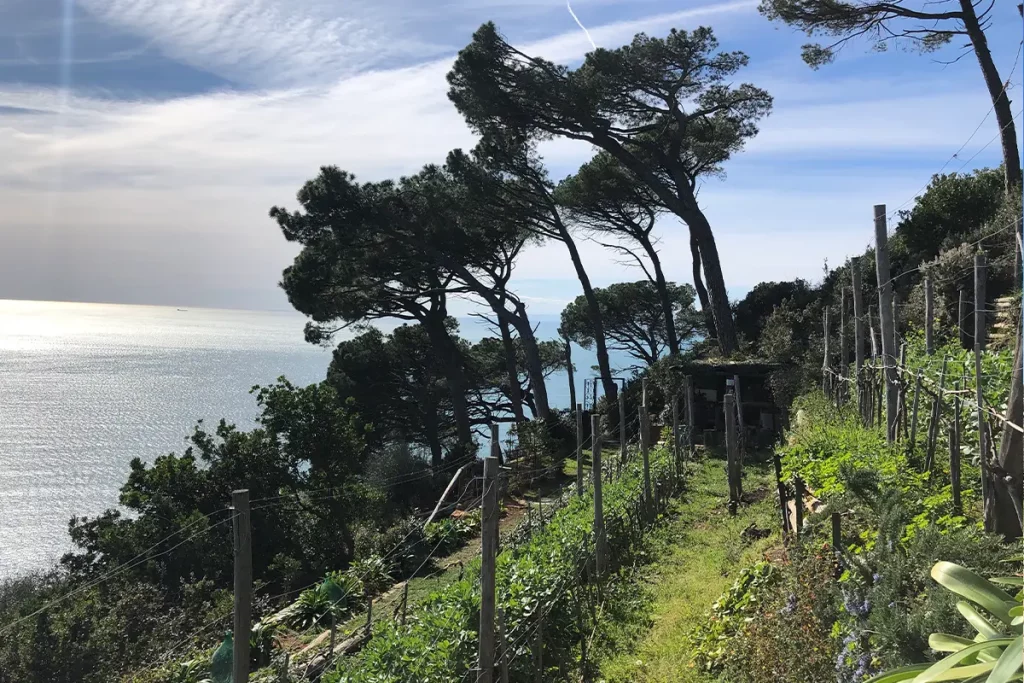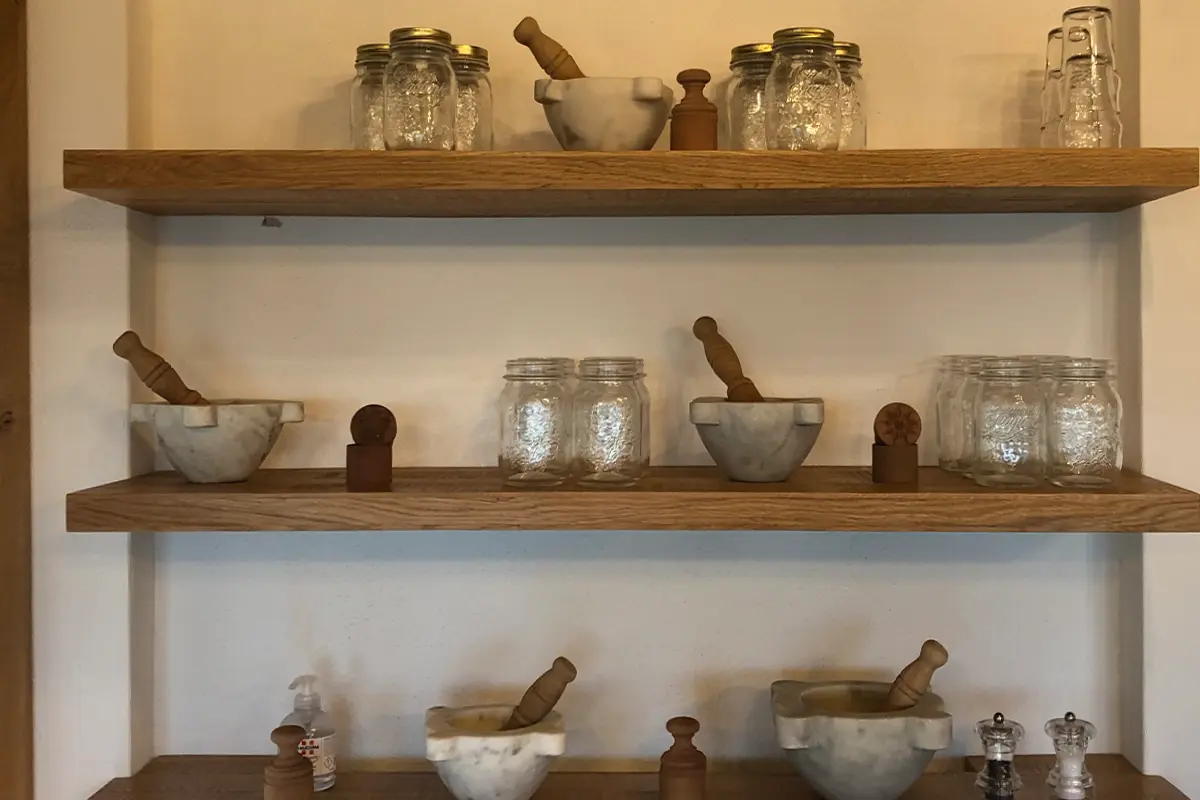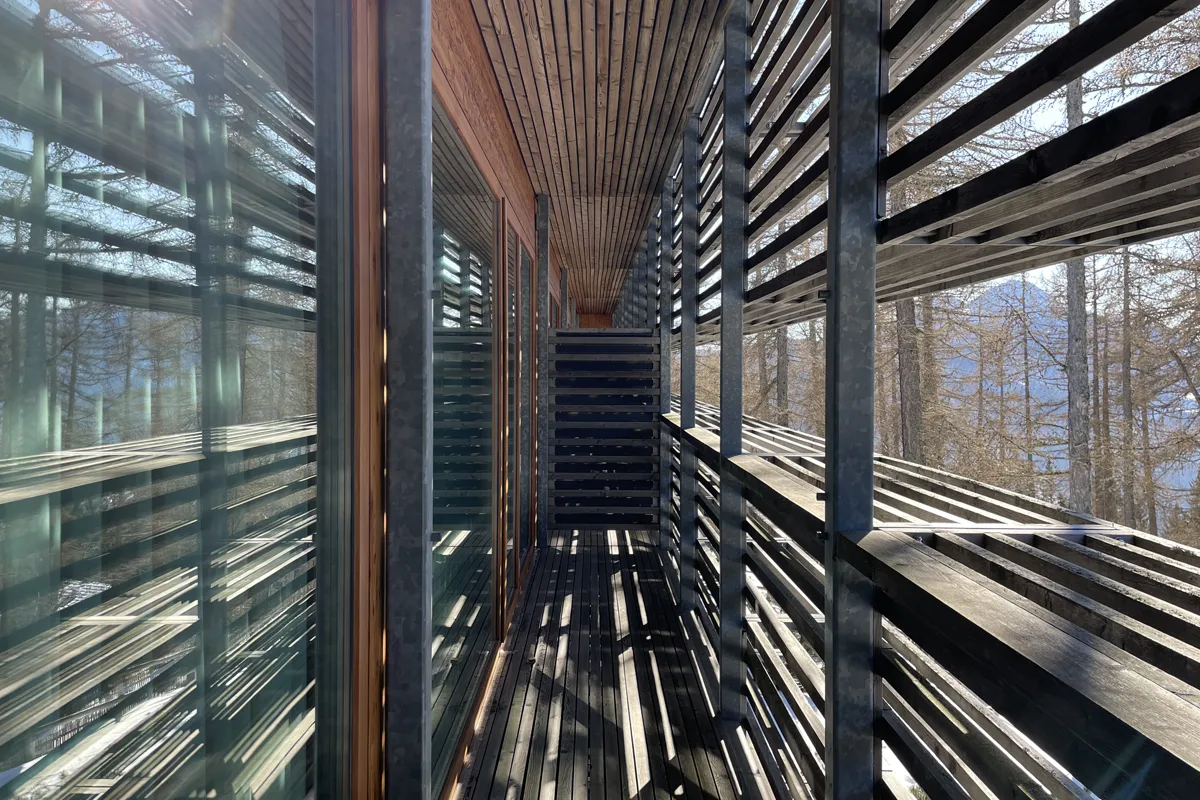Portofino is to be an example of sustainability in Italy, the visionary idea of Franca Sozzani. Mino Viacava, founder of La Portofinese: a farm dedicated to privacy
Portofino: from the sea to the mountain, a natural heritage to be preserved
A light blue background like sky, a gray brick castle suspended over a deep blue sea, where a dolphin swims. A frame of pine branches and pine cones, surmounted by a gray and red crown. The Portofino Coat of Arms. At the time of the Roman Empire, the village of Portofino, between Genoa and the gulf of Tigullio, had the name Portus Delphini. As for the records by Plinio Il Vecchio.
The name was due to the large population of these marine mammals, which can still be spotted in the Ligurian sea today. Portofino lies in a protected natural area, among maritime pines, olive trees and cliffs. The cliffs of the Portofino Promontory, rocky coasts with sheer walls, are home to a fauna and flora unique in the Mediterranean. This is where La Portofinese was born, a widespread experience, connecting the sea with the Portofino mountain via the Piazzetta. A mosaic of land, an agricultural company born from the desire to recover the ancient values of the territory and to restore and preserve nature and its spaces.
From the Lighthouse to the Portofino Marine Protected Nature Reserve
On the rocky tip of the promontory is the Portofino Lighthouse, white and blue like the one on the postcards. On the terrace overlooking the sea, La Portofinese runs the lounge bar, which is also dedicated to private events. Behind the lighthouse begins the protected nature reserve. Established in April 1999, the Portofino Marine Protected Area extends around the promontory of the same name in the municipalities of Camogli, Portofino and S. Margherita Ligure.
The Portofino Natural Park covers an area of about 4 square kilometers and is home to a variety of flora and fauna, including over eight hundred species of plants and one hundred species of birds. The park includes several hiking trails offering views of the coast and the sea. The Portofino nature reserve is a unique and valuable asset to Italy’s natural heritage and a popular destination for nature lovers, hikers and tourists.
Portofino heritage of biodiversity: one of the few places where Pinna Nobilis can still be found
The Pinna Nobilis, is a large bivalve marine mollusc found in the Mediterranean Sea. It is considered a protected species due to its ecological role and cultural significance. The noble shell is a filter-feeder, meaning it plays a crucial role in maintaining the health of the marine ecosystem by filtering water and removing pollutants. It is also a cultural symbol in the Mediterranean region, where it has been used for centuries to produce jewelry and decorative objects.
Overfishing and habitat destruction have led to a decline in the population of the Pinna Nobilis, which is now classified as a critically endangered species. To protect the species from further decline, it is legally protected in many countries, including Italy, where it is illegal to collect or sell the shells. At Portofino in the Bay of Paraggi, conservation efforts are also underway to restore the population of the noble conch through breeding programs and habitat restoration.
Seagrass beds extend across the seabed in the sea around Portofino
Posidonia oceanica, unlike algae, develops roots, leaves and produces flowers and fruits. It develops by creating underwater prairies in sunlit areas. In addition to producing oxygen, Posidonia oceanica dampens wave action by limiting coastal erosion and is home to numerous organisms. Seagrasses also fulfill another function: they are CO2 sinks; they absorb twice as much carbon dioxide as above-ground forests.
All along the Portofino Promontory, there are sheer rocky coasts that in the submerged part maintain significant inclinations. Grasslands develop inside the bays and along the western and eastern slopes, where the slope of the seabed is gentler. The prairies can be affected by the increased turbidity of the water, and therefore at considerable depths in some areas they have become distressed or have even disappeared, leaving a carpet of dead rhizomes on which organisms such as algae and anemones settle.
La Portofinese, Osteria dei coppelli: maintaining Portofino’s rural tradition
Just two hundred meters from sea level and the small square in Portofino, a walk of a couple of kilometers takes you to the La Portofinese estate on the Monte, in the locality of Prato. The steep, narrow path-like streets do not allow traditional cars to climb. It is a journey of yesteryear, with cars not much bigger than the old 500s. For those who do not want to or cannot walk the paths, a transfer service is offered up to the top of the Monte, to the Osteria dei coppelli – named after the spring that springs from the heights of the vineyard. An educational farm with chickens and rabbits, an old drying room.
Since 2021, the Osteria dei Coppelli has been hosting ‘one table only’ lunches and dinners. At the Osteria dei Coppelli it is possible to participate in cooking classes with young chefs, who use seasonal products accompanied by herbs and vegetables from the Osteria’s garden. Corzetti and pesto are prepared, but pizza and focaccia are baked in the open-air wood-fired oven. The Osteria also has a small workshop for processing honey – chestnut and millefiori – and jams, and a small oil mill for cold extraction of the oil from the olive trees on the La Portofinese grounds. The wine produced in the vineyards upstream is stored inside the Cantina & Grotta dei Coppelli, a tunnel dug into the rock and fed by geothermal energy.
The Portofino Eco-farm: the place of otium
A long wooden plank marked by the saltiness, perched on the Monte di Portofino surrounded by Vermentino vines and maritime pines. In front only the sea. To get to the Portofino Eco-Farm, you walk along a panoramic path through the vegetation. An energy self-sufficient farm, powered by mini wind turbines and photovoltaic panels, also positioned on the bee houses. Hidden in the greenery, the beehives are monitored by hygroscopic sensors that detect the internal temperature and count the insects’ flights.
The Eco-Farm is designed to offer various moments from a ‘Ligurian picnic’ based on focaccia and vegetable pies, to tastings in the vineyard of Vermentino ü Portufin, the fruit of a selected production of a maximum of two thousand bottles per year.
The Portofinese: luxury is privacy
Lessons in nature, walks alone or with a guide on the cliff-top paths above the Cala degli Inglesi. La Portofinese, offers experiences for a couple or a group of friends, up to a maximum of 20 people. «We want to share the passion that binds us to this land with our guests», says Mino Viacava, founder of La Portofinese. Founded fifteen years ago on abandoned land, it is now a place that has become an integral part of the family, thanks to the commitment of Mino Viacava and his family. «We want to pamper people, make them feel part of what they are experiencing, and this would be impossible in the presence of other guests», explains Mino Viacava.
On the other side of the Osteria dei coppelli, we find Il Mulino del Gassetta, one of the last remaining mills in the Valle dei Mulini. A museum open to all visitors, a restaurant with a terrace and a vegetable garden where seasonal vegetables grow, including hops for the production of La Portofinese beer.
Mino Viacava, La Portofinese: entire farming families worked here, including that of my great-grandparents
Mino Viacava, born in 1951, a Portofino resident for six generations. «I was born in the piazzetta in Portofino, I am the son of bricklayers, but with a ‘peasant’ heart». A duality that has given rise to two entrepreneurial realities rooted in the territory. The result of this duality has given birth to two entrepreneurial realities firmly rooted in the territory. Edile Portofino, the construction company inherited the work of great-grandfather Emanuele Viacava and grandfather Gerolamo. Gerolamo Viaacava had a particular talent for restoring the friezes of historic villas, to the point that Baroness Mumm called him to work for her at the Castello di San Giorgio. Mino’s father, Emanuele, worked on the construction of the villas of the most notable people of the time in the 1960s. And Mino followed in their footsteps by building the Portofino villas of well-known jet-setters from Dolce and Gabbana to Franca Sozzani.
Says Mino Viacava: «I created this project as a sign of gratitude and respect for my ancestors, who had abandoned their work as sharecroppers to seek work in the village. My grandfather always talked to me about the countryside, until his memories became my desire. I started by buying small plots of land, a few olive groves, to arrive at the current three hectares of cultivated fields on the slopes of the Monte, inside the Portofino Natural Park». Before him, no one in Portofino had invested in renewables. Asked why he thought of building his company with a view to sustainability fifteen years ago, ahead of his time, Mino replies, «Because we have no other way to go. There is only this road. I have simply taken up the old traditions, trying to work the land as it was once done, without the use of pesticides or other chemicals».
Mino Viacava, the friendship with Franca Sozzani
Franca Sozzani, director of Vogue Italia since 1988, the little time she didn’t spend in the editorial office was spent in Portofino, at Villa Franca, in front of the Hotel Splendido. Franca Sozzani’s wish was to see a Portofino connected with nature and respectful of the environmental balance. For this vision, she had involved the big families of her friends: the Pirelli, the Garrone, the Terna. Back in 2014, Franca devised Portofino’s first sustainability manifesto. Two years later, work was started to make the settlements in the village and on the promontory eco-friendly. For Franca Sozzani, Portofino was to become the flagship of sustainability in Italy, starting with the La Portofinese farm.
Domiziana Montello
